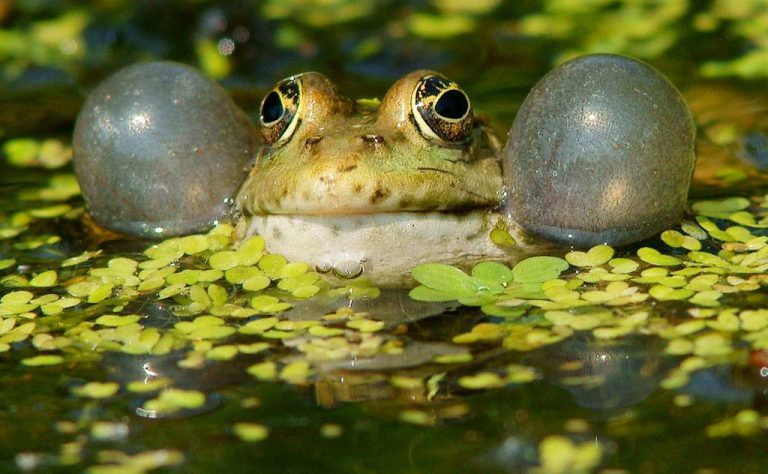Study Traces Evolution of Acoustic Communication Back to 350 Million Years Ago
By UNIVERSITY OF ARIZONA JANUARY 17, 2020

Frogs, like mammals, originated as predominantly nocturnal animals, but maintained the ability to communicate acoustically after switching to being active during the day. Credit: Peter Trimming/Creative Commons
A study tracing acoustic communication across the tree of life of land-living vertebrates reveals that the ability to vocalize goes back hundreds of millions of years, is associated with a nocturnal lifestyle and has remained stable.
Imagine taking a hike through a forest or a stroll through a zoo and not a sound fills the air, other than the occasional chirp from a cricket. No birds singing, no tigers roaring, no monkeys chattering, and no human voices, either. Acoustic communication among vertebrate animals is such a familiar experience that it seems impossible to imagine a world shrouded in silence.
But why did the ability to shout, bark, bellow or moo evolve in the first place? In what is likely the first study to trace the evolution of acoustic communication across terrestrial vertebrates, John J. Wiens of the University of Arizona and Zhuo Chen, a visiting scientist from Henan Normal University in Xinxiang, China, traced the evolution of acoustic communication in terrestrial vertebrates back to 350 million years ago.
The authors assembled an evolutionary tree for 1,800 species showing the evolutionary relationships of mammals, birds, lizards and snakes, turtles, crocodilians, and amphibians going back 350 million years. They obtained data from the scientific literature on the absence and presence of acoustic communication within each sampled species and mapped it onto the tree. Applying statistical analytical tools, they tested whether acoustic communication arose independently in different groups and when; whether it is associated with nocturnal activity; and whether it tends to be preserved in a lineage.
More:
https://scitechdaily.com/study-traces-evolution-of-acoustic-communication-back-to-350-million-years-ago/
